Nasturtiums are a plant that every gardener should consider growing. Besides their beauty, nasturtiums are also edible, medicinal, and are great for companion planting in your garden. On the California coast they have naturalized, and you can often find large patches of them growing wild. I have always been amazed by this, and I wonder if people realize how many uses this plant has. Even if it doesn’t grow wild where you live, it is still very easy to grow from seed. Here is how to grow and use nasturtiums.
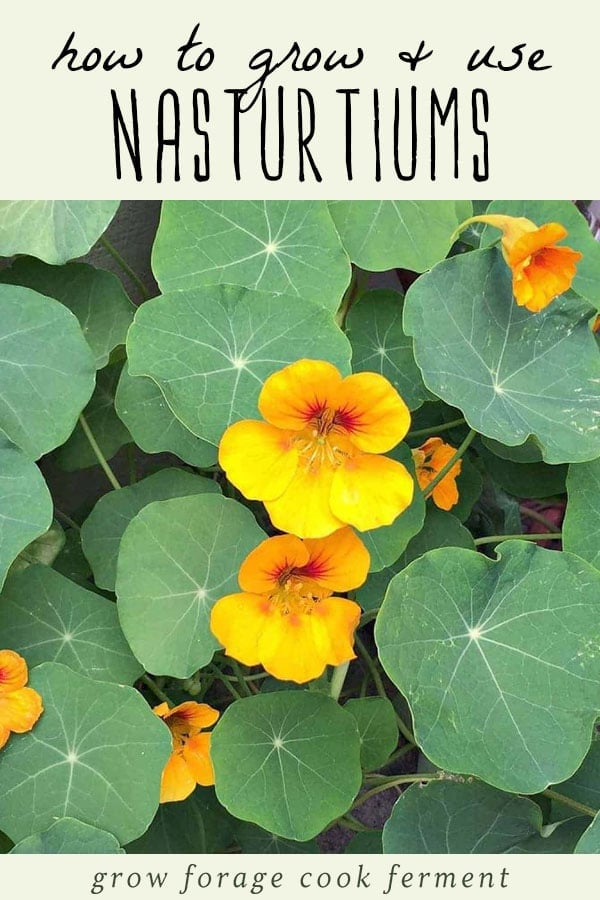
Want to save this post for later?
How to Grow Nasturtiums
There are many varieties of nasturtiums, with many different colors. They usually range from almost white to yellow, orange, and red. They have distinct leaves that are fairly large and mostly round, with prominent radial veins. They remind me of lily pads in a way.
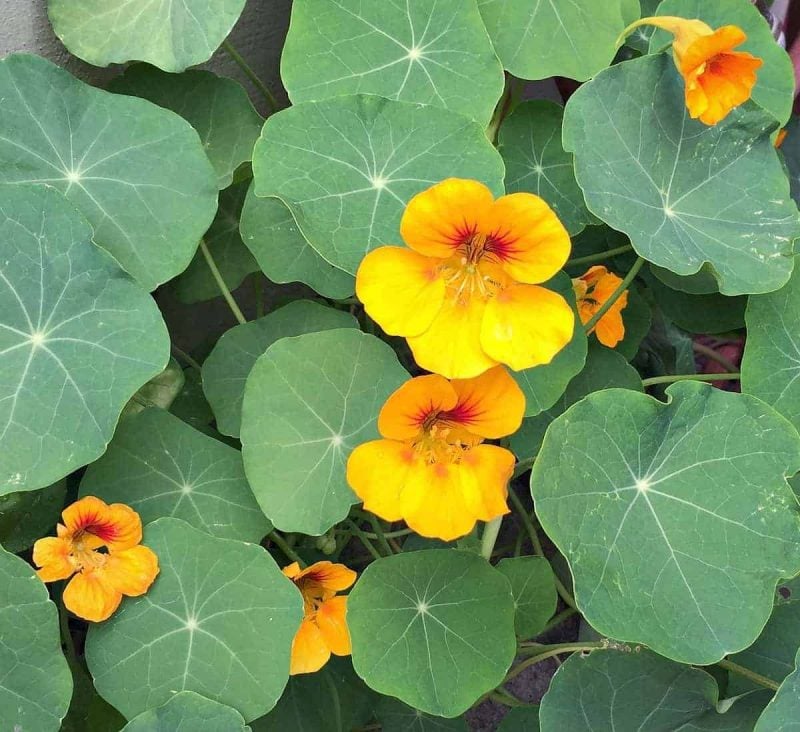
Most varieties are trailing and vine like, and are great for climbing up a trellis. Others are more compact and are better for containing in a smaller area. The wild variety is trailing and will climb up trees and steep hillsides. This is a big patch of wild nasturtiums that I found on the central California coast.
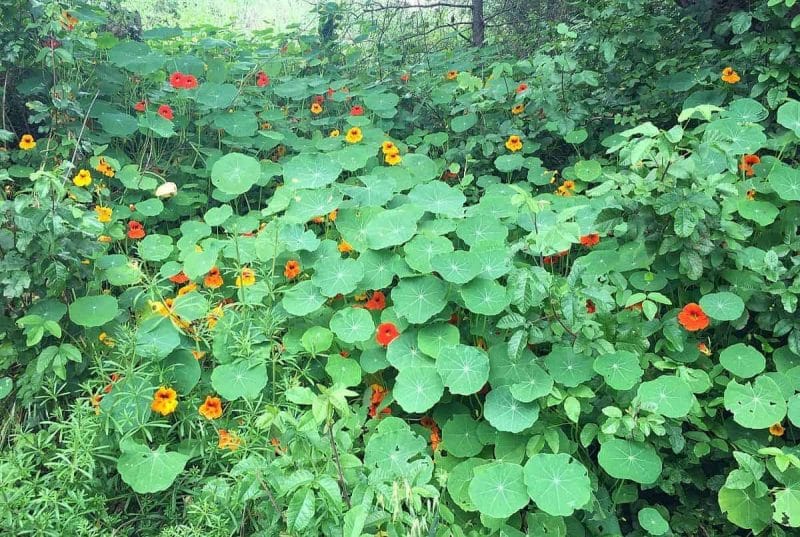
Nasturtium seeds are large and grow best if they are planted directly in the garden. They are not frost tolerant, however, so be sure to wait to plant them until all danger of frost has passed. They will do well in sun or partial shade, but do prefer some shade when in really hot climates.
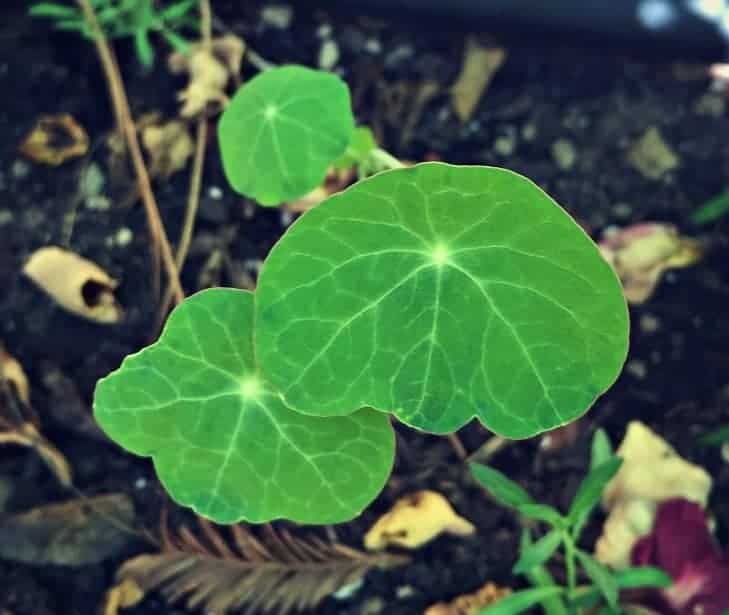
They also will thrive in poor soils, so consider planting them in that spot where nothing else will grow. This is probably why they have naturalized in some areas of the country, and they will often pop up in the most unlikely of places. I found this one growing under the deck in between some tiles and blocks of wood.
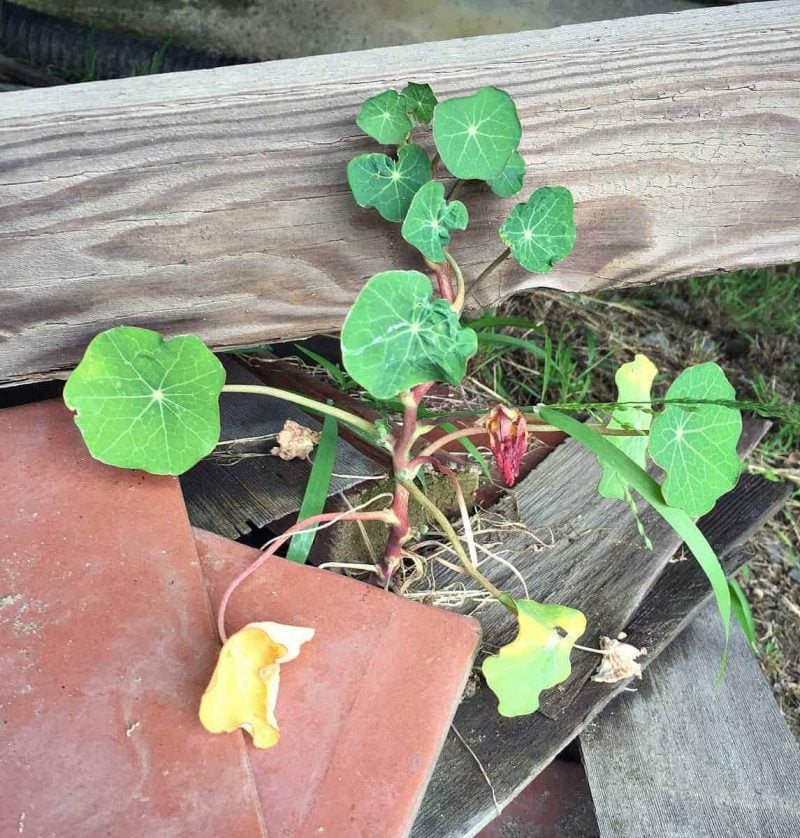
Get recipes using wild violet, lilac, forsythia, chive, calendula, lavender, white clover, nasturtium, elderflower, yarrow, rose, and Queen Anne’s lace flowers in my ebook Edible Flower Recipes: Infusions, Syrups, Jellies, Beverages, & Snacks!
Uses of Nasturtiums
Nasturtiums attract numerous beneficial insects that you want in the garden. They are also a trap plant for aphids, snails, and slugs. Plant them next to your curcubit plants (squash, cucumber, etc.) as they repel squash bugs and cucumber beetles. They have similar benefits for brassicas (cabbage, broccoli, etc.) as well.
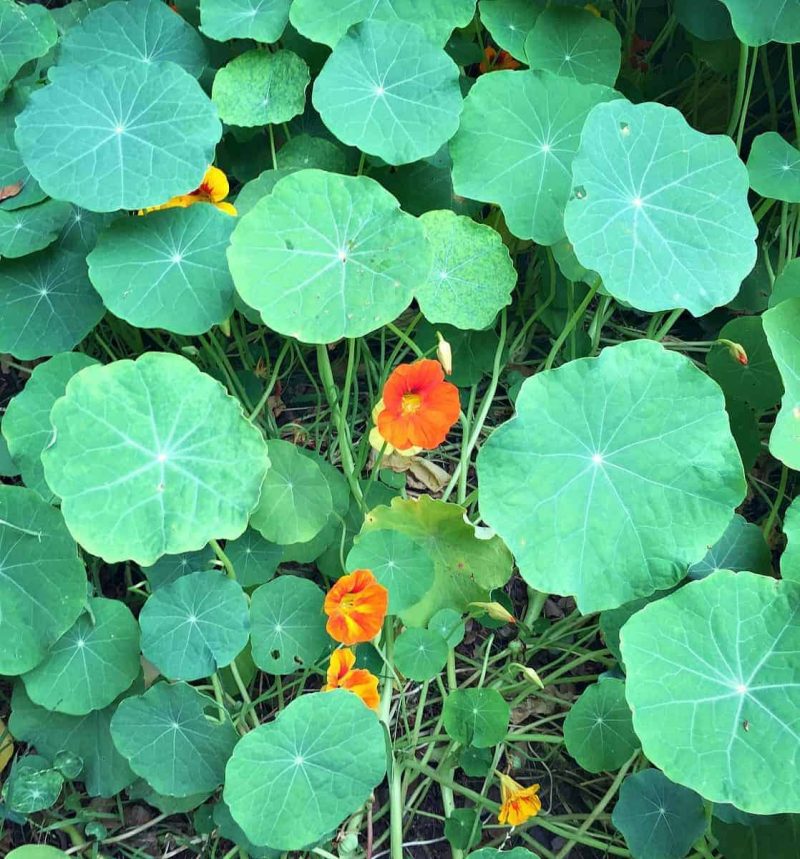
The majority of the plant is edible, from the leaves to the flowers to the seed pods, but the seeds themselves can be toxic in large quantities. The leaves can be eaten as a fresh salad green, and have a peppery flavor similar to watercress. The flowers are also peppery, even more so than the leaves, and make a beautiful and tasty addition to salads. They are high in vitamin c, and are the highest plant source of lutein.
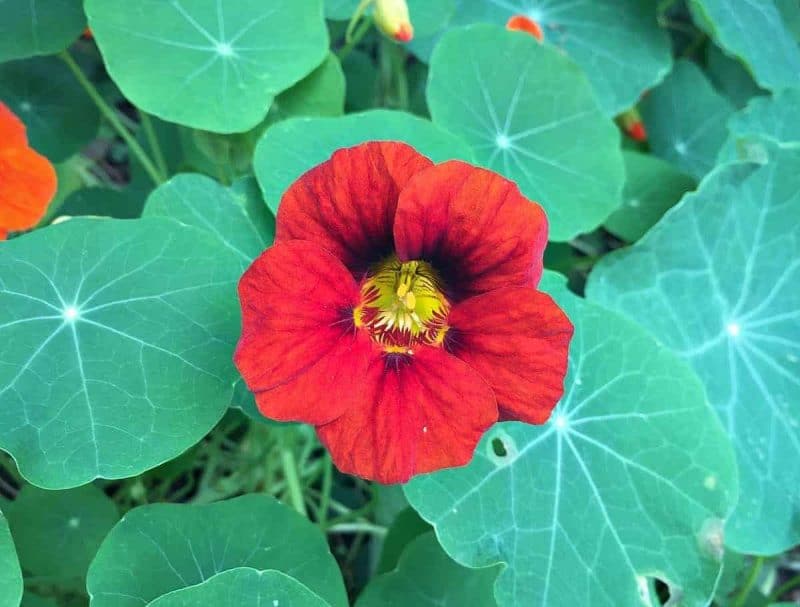
The fresh seed pods are also edible, and are often made into nasturtium seed “capers.” I have never tried this myself, but it sounds like a great idea to me! There is a recipe for lacto fermented nasturtium capers on the Attainable Sustainable blog that I’d love to try someday.
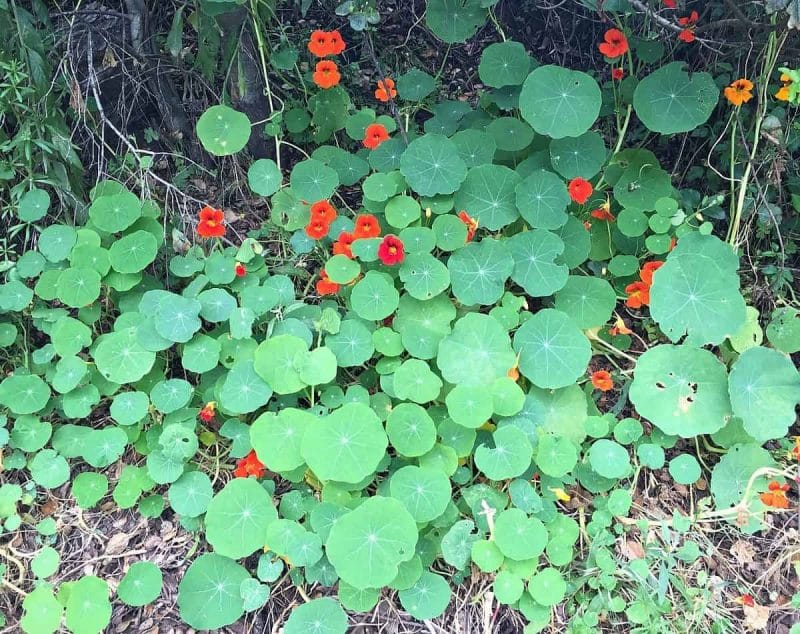
Nasturtiums also have medicinal properties. It is a disinfectant and wound healing herb, similar to calendula. All parts of the plant are antibiotic, antibacterial, antimicrobial, and antifungal, and can be used to make an infusion. It is also known to be good for the hair, scalp, and skin, and may be beneficial for coughs and respiratory problems.
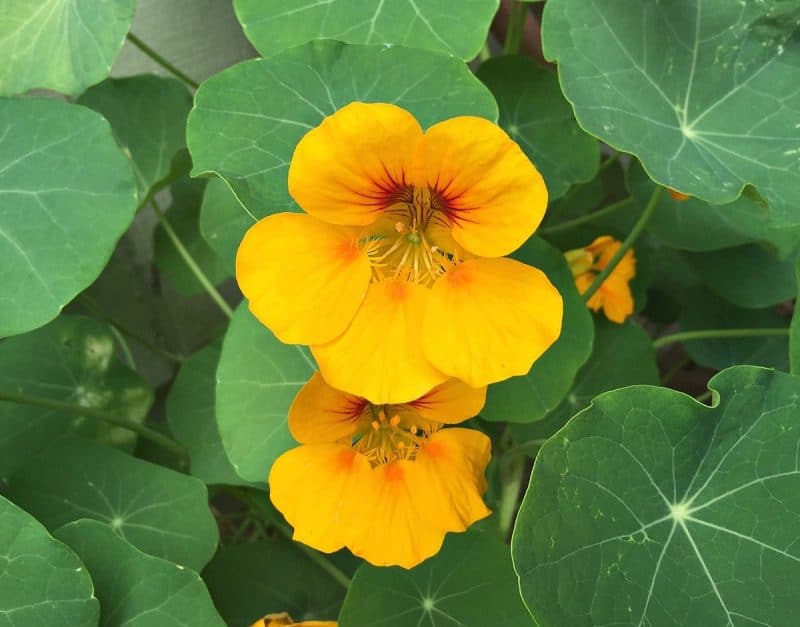
Basically, nasturtium plants are something that you want to have around! With all their multiple benefits and uses, and considering how easy they are to grow, there’s no reason not to have them in your garden. Now is the time to start thinking about getting them planted.
Have you ever grown nasturtiums? Have you ever seen them growing wild?

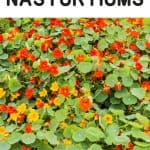
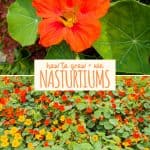
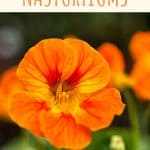
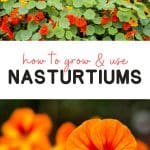
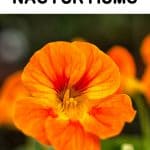
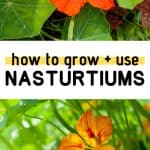
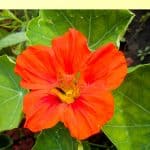
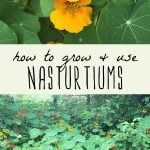

I planted seeds but they came up with very long stalks that are falling over.Do I just plant them deep in soil?
I’ve pickled them and made hot sauce. I can’t imagine anyone needs help growing them. LOL. I have to pull them out in bunches as they will overrun my garden quickly.
I grow Nasturtium every year! The vibrant colors are irresistible! Mine do not like direct hot sun. They also seem to grow better when not overwatered. I didn’t realize they would help with the cucumber beetles, so tomorrow mine in the hanging baskets, are going on a hook next to the cucumber trellis! Thank you for such an info packed post!
You’re so welcome!
A friend gave me a pkg. of Nasturtium seeds. I soaked them before planting them. To my amazement, Hummingbirds love them! :)
I have raised vegetable beds and would like to plant these in or near my gardens to keep the pests away. the beds are small so not sure planting in the beds is possible so wanted to see if planting near the beds or along side would still keep the bugs away or do they need to be planted right by the plants?
Hi Trina, planing them anywhere in the vicinity should be helpful!
If the beds are small, you could always try a large pot with a trellis/vine support up the back?
My chickens love them. And so dependable! We messed up our garden when we built a wall and they still came back. How good is that!
When I was in South Africa, we stuffed the blossoms with garlic cream cheese and fried them in oil. I think it may have been the most delightful thing I have ever eaten!
They grow wild here in South Africa also!never even knew that they are edible…
I live in southern France. I planted nasturtium seeds in good potting mix in tubs. I have lots of greenery but no sign of flowers yet. Should I just be patient.
My understanding is that nasturiums won’t flower as much in rich soil. You might try a fertilizer high in phosphorous or a fertilizer designed to increase blooms in flowers. Good luck!
They grow and flower well in the soil mixture you make for square foot gardening.
How often should you water them if you have them indoors? That way I can stop killing them from either over or under watering them!
Thank you for your help!
I love growing Nasturtiums they are so bright in the garden climbing up the fence I eat them daily in my lunch and love using them in salads with the family. The pepper tastes is great small children love them as well love my organic vegetable garden.
Thanks for the great information. So I understand that they are annuals? You replant every year, or do they reseed themselves mostly?
Will share your FB post of my FB page, thanks!
Lady Lee,
they are faithful and dependable!! Mine keep coming back
every year, (I do nothing except wait for them to come back) All I do is water them 3x a week and whallah!!
They look lovely against my house!!!
In my northern NY climate (zone 4) they are annuals. I love them, but good to know how useful they are!
Mine produced plenty of seeds that drop and I water them about 3x a week, and I can count on them coming back too! They are cheery! The neighbors always comment on how beautiful they are!! One of my favorite flowers out in the garden!
Experimenting growing them hydroponically this year
Did you have any success?
I have successfully grown several pots in my grow tower. I’ve transplanted most to my flower pots outdoors. Beautiful greenery with lovely blooms, but this 100 degree heat wave of 3 weeks is rough on them (and everything else)!
Love mine, they are the gift that keeps on coming, always a blessing to see them
growing in my front yard, and yummy!!! Didn’t know they have Lutein, now I must
eat them more, or maybe I will make a poultice and cap them (dry). As always
thanks for all you do!!
thank you for the wonderful article of Nasturtiums. We have been using them for a few years and we just love them. In the summer I make a wonderful pesto out from them.
Question: if they are ok in part shade, can i grow them indoors near a window where i only get indirect sunlight because we dont have good sun exposure?
Is it possible to grow Nasturtiums indoors?
Can they be planted by seed soon after they are formed, or do you have to dry them and wait until the following year?
I have grown Nasturtiums in my deck pots for 7
Years now.. I have just gathered the seeds from my plants (and, ok to be honest, I also have taken seeds from my walks), dried them in a paper bag in a single layer. Come Spring I soak them about 4-5 hours and plant in the pots!
I planted some for the first time and most of them have got streaks of white and the leaves are curly. It looks like there is something wrong with them. The soil is heavy clay but I also planted one in a pot with potting soil and it also is the same. Perhaps the seeds were infected?
I have also found this. It seems to be some sort of mutation. Maybe once in awhile one of the seeds just doesn’t have all of its chromosomes. Enjoy your oddities!
Those are the Variegated variety, I had them planted in a pot actually 2 pots- they took awhile had beautiful leaves This week all of a sudden mixed colors of flowers started blooming. Hard soil sounds like it needs to be watered more.
‘Nastys’ always have a place in my garden! The cabbage moth lays its eggs on the underside of the leaves here in Wales, a good squirt of insecticidal soap gets of the problem. The ones called ‘Alaska’ are my favourite, as their leaves looked splashed with white, just gorgeous!
Thanks for info on the black spots on the underside of the flower. I got them when I grew them in NY and in London. Just my luck I guess. From Wales originally.😊
Planted them in the garden last year. At the end of the season I carefully collected their seeds and grew them again in my greenhouse only to find they had seeded themselves everywhere anyway ???? they are really pretty and this year I have used them as a companion plant for my cucumbers.
I absolutely love nasturiums, especially as an edible flower. They really brighten a salad. Thanks for providing more information.
Very interested in their climbing abilities as I have trelesis arbors and arches for them to grow
How do you prevent the black bugs that cover them?
I grow them every year and they last till the fall. BUT you have to watch out for those nasty black ?aphids? that grow under the leaves and can kill off your plants.
why do they attract caterpillars?
Great photos.I’ve just bought some red wonder nasturtiums..fab deep red flowers and grey-green leaves.They don’t grow wild here in England,if only!Nice blog,thanks.
Love!!!